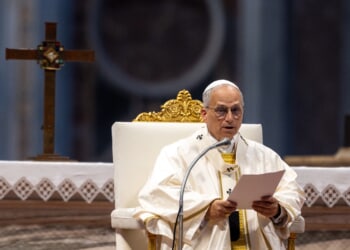And just like that, the entire landscape of college sports has changed.
The NCAA vs. House Settlement, known simply as the “House Settlement,” has officially gone into effect Tuesday, July 1 to mark a new era for athletics at the university level. The deal is meant to cause a major switch, marking the end of the NCAA‘s model of amateurism that they’ve used for decades now, and college athletes will now be allowed to receive direct payment. (RELATED: BYU’s Jake Retzlaff To Enter Transfer Portal Due To Expected Honor Code Suspension Over Assault Allegations: REPORT)
Damages to former athletes will also be paid as well, with each the NCAA, ACC, Big 12, Big Ten, Pac 12 and SEC coming to an agreement to dish out $2.8 billion to ex-athletes who weren’t able to earn any kind of name, image and likeness (NIL) payment before 2021. Those payments will be taken care of over the next 10 years.
Division I universities now have the opportunity to opt-in to the deal that will unlock their ability to directly pay athletes that attend their school, going by a revenue-sharing cap that will be set at $20.5 million per college. It’s expected that the cap will increase every year.
A chart from the NCAA delivered to member schools today outlining what it means to opt into the House settlement. pic.twitter.com/8jknjc6ByQ
— Ross Dellenger (@RossDellenger) February 12, 2025
As a Miami Hurricanes fan, I’ve got mixed feelings about this. I’m glad the kids are finally getting paid, but I’m not the biggest fan of there being a salary cap. The Canes were about to roll that a** as time went along with how much money flows through South Florida.
Regardless, it’s going to be interesting to see how this goes here in the new era.



![Man Arrested After Screaming at Senators During Big Beautiful Bill Debate [WATCH]](https://www.right2024.com/wp-content/uploads/2025/06/Man-Arrested-After-Screaming-at-Senators-During-Big-Beautiful-Bill-350x250.jpg)













